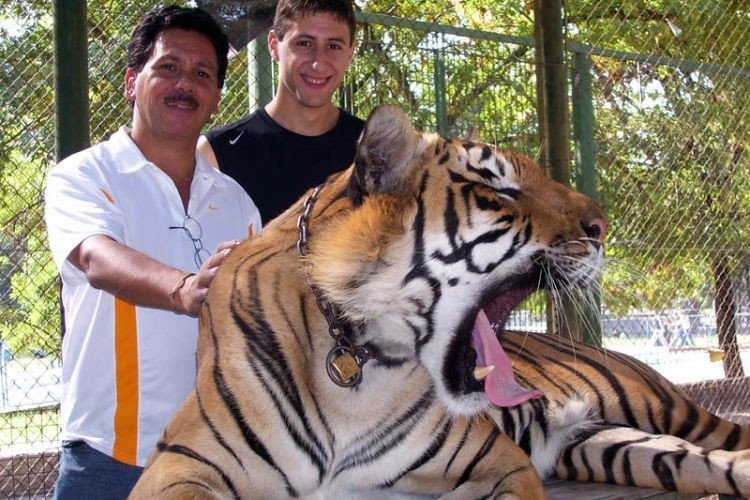In ZOO With Predators, Argentina
|
Some critics argue that animals that live in zoos are treated as voyeuristic objects rather than living creatures, and are often driven to insanity in the transition from being free and wild to incarcerated and dependent on humans for survival.
A four-decade Oxford University study found that polar bears, lions, tigers, and cheetahs show the most evidence of stress in captivity. A PETA investigation of zoos in the U.S. found that several bear species were engaging in neurotic, stereotypical behavior, including pacing, walking in circles, and swaying or rolling their heads. The Badaltearing Safari Park in China keeps a pair of moon bears in cages so small that they are unable to turn around. The Daily Mail reported in January 2008 that one of them appeared to have gone insane and spends its time shaking its head and banging into the sides of the cage.
• Live feeding
In the Badaltearing Safari Park in China, zoo visitors can throw live goats into the lions' enclosure and watch them being eaten, or can purchase live chickens tied to bamboo rods for the equivalent of 2 dollars\euros to dangle into lion pens. Visitors can drive through the lion's compound on buses with specially designed chutes leading into the enclosure into which they can push live chickens. In the Xiongsen Bear and Tiger Mountain Village near Guilin in south-east China, live cows and pigs are thrown to tigers to amuse visitors. In the Qingdao zoo, visitors engage in "tortoise baiting", where tortoises are kept inside small rooms with elastic bands round their necks, so that they are unable to retract their heads. Visitors then throw coins at them. The marketing claim is that if you hit one of them on the head and make a wish, it will be fulfilled.
|
|















